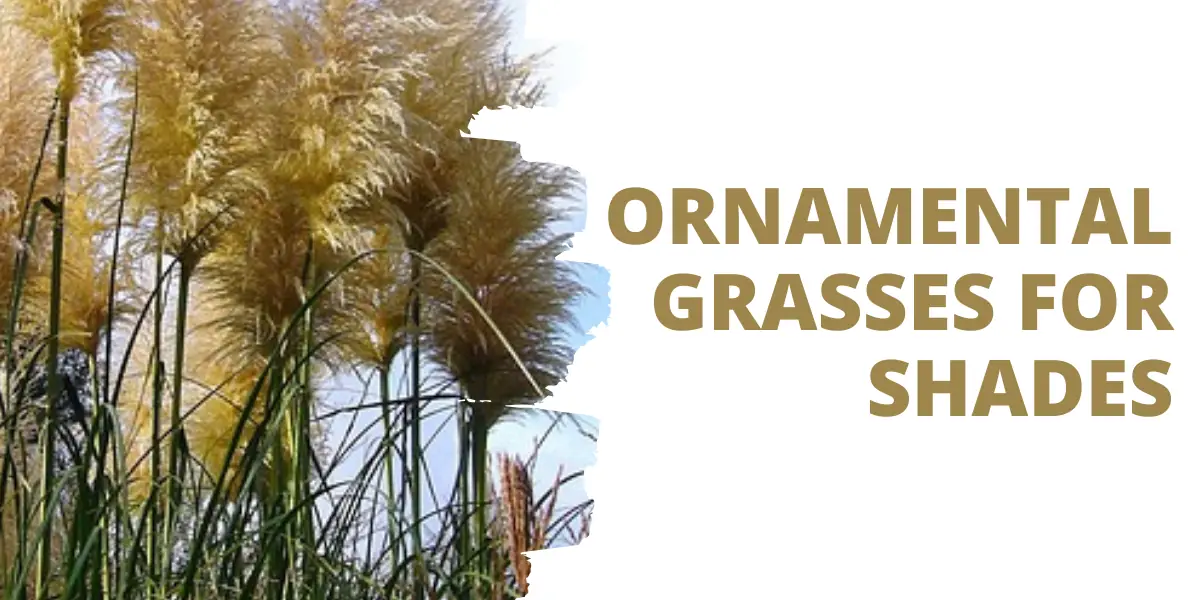
Ornamental grasses can bring a sense of tranquility and beauty to low-light gardens, creating a serene oasis in shaded areas. With their unique textures and graceful movements, ornamental grasses are the perfect choice for adding interest and dimension to shady landscapes. In this article, we will explore the benefits of using ornamental grasses in low-light gardens, different types suitable for shade, and design tips for incorporating them effectively into your garden design.
Key Takeaways
- Ornamental grasses are ideal for adding visual interest to low-light gardens.
- Choose shade-tolerant ornamental grass varieties like Japanese forest grass and Hakonechloa.
- Consider using ornamental grasses as borders or focal points in shaded areas.
- Regular maintenance, including pruning and watering, is essential for healthy ornamental grasses in low-light conditions.
- Pairing ornamental grasses with shade-loving plants can create a harmonious and balanced garden design.
Why Ornamental Grasses Are Perfect for Low-Light Gardens
Benefits of Ornamental Grasses
Ornamental grasses thrive in low light, offering lush texture and movement to shaded gardens. They require minimal care, making them ideal for busy gardeners. Here’s why ornamental grasses for shade: are top choice
- Versatility in design, fitting into various garden styles.
- They provide year-round interest with minimal effort.
- Grasses enhance biodiversity by supporting local wildlife.
Ornamental grasses create a serene backdrop, setting the stage for a peaceful retreat.
Their resilience to pests and diseases means less work and more enjoyment. With these benefits, it’s clear why ornamental grasses are the unsung heroes of the shade garden.
Types of Ornamental Grasses for Shade
Selecting the right ornamental grasses for shaded areas can transform a dim garden into a lush retreat. Hakonechloa macra, also known as Japanese forest grass, thrives in shady conditions and offers a golden hue. Carex species are versatile and can flourish in various light conditions, including low light.
- Hakonechloa macra – Golden, flowing texture
- Carex spp. – Adaptable, evergreen clumps
- Chasmanthium latifolium – Upright, woodland native
- Brachyelytrum erectum – Feathery, shade-tolerant
Embrace the natural elegance of shade-loving grasses to enhance the tranquility of your garden.
Remember, not all grasses are sun worshippers. Some prefer the cool understory of a forest. For a serene garden, mix textures and shades of green for a tapestry effect.
Design Tips for Using Ornamental Grasses
When designing with ornamental grasses, consider their mature size. Group them in odd numbers for a natural look. Use taller varieties as focal points, and shorter ones to fill gaps.
Texture plays a key role in low-light gardens. Mix fine and coarse grasses to create contrast. Here’s a simple guide:
- Fine-textured grasses: Use for a soft, feathery feel.
- Coarse-textured grasses: Add for bold, architectural statements.
Remember, the key to a serene garden is balance. Don’t overcrowd; give each grass room to sway and grow.
For continuity, repeat a particular grass throughout the space. This creates rhythm and leads the eye through the garden. Choose grasses that complement the existing color palette for a cohesive design.
Creating a Tranquil Oasis with Ornamental Grasses
Colorful Varieties for Shade
Brighten up your shady spots with ornamental grasses that thrive without full sun. Hakonechloa macra, also known as Japanese forest grass, offers cascading golden leaves. For a pop of blue, consider the hardy ‘Elijah Blue’ fescue.
- Hakonechloa macra – Golden, cascading foliage
- ‘Elijah Blue’ fescue – Striking blue tufts
- Carex oshimensis ‘Evergold’ – Variegated green and gold
- Chasmanthium latifolium – Bamboo-like stalks
These grasses not only add color but also movement and texture, transforming your garden into a serene retreat.
Remember, even shade-loving grasses need some light. Place them where they’ll receive filtered sunlight, like under a canopy of trees. With the right care, these grasses will flourish, creating a peaceful and vibrant garden sanctuary.
Maintenance Tips for Healthy Grasses
Keeping your ornamental grasses thriving in low-light conditions doesn’t have to be a chore. Water wisely; too much moisture can lead to root rot, especially in shady areas. Aim for deep, infrequent watering to encourage strong root growth.
Fertilization is seldom needed for shade-tolerant grasses. If you do fertilize, choose a balanced, slow-release formula to avoid rapid, weak growth that can’t stand up to shade.
Pruning is essential. Remove dead foliage in early spring to make way for new growth. This simple step keeps your grasses looking fresh and vibrant.
Here’s a quick checklist for seasonal care:
- Spring: Clean up, divide if necessary, and start watering.
- Summer: Monitor for pests, water during dry spells.
- Fall: Reduce watering, prepare for dormancy.
- Winter: Protect roots with mulch if in a cold climate.
Pairing Grasses with Shade-Loving Plants
Creating harmony in your shade garden involves more than just planting ornamental grasses. Pair them with other shade-loving plants for a lush, layered look. Consider the texture and color of companion plants to complement the fine foliage of grasses.
Hostas and ferns are excellent companions for ornamental grasses. They offer contrasting shapes and a variety of greens that enhance the garden’s palette. Here’s a simple guide to pairing:
- Hostas: Broad leaves set against narrow grass blades.
- Ferns: Delicate fronds add softness.
- Heucheras: Colorful foliage for year-round interest.
- Astilbes: Feathery flowers provide vertical accents.
Remember, the key to a serene garden is balance. Mix and match textures and colors for a tranquil retreat.
Regularly assess your garden’s composition. Swap out plants that don’t thrive and introduce new pairings for dynamic growth. Your low-light garden will become a sanctuary of shaded serenity.
Inspiring Ideas for Incorporating Ornamental Grasses
Grasses for Small Spaces
Maximizing your shaded garden nooks? Choose ornamental grasses that thrive in small spaces. These varieties don’t need much room to make a big impact. Look for dwarf or compact types that add texture without overwhelming.
Hakonechloa macra, or Japanese forest grass, is a top pick for its graceful form and vibrant color. It’s perfect for tucking into corners or along pathways.
- Dwarf fountain grass
- Sedge
- Carex
Embrace the elegance of minimalism. A few well-chosen grasses can transform a tiny area into a lush retreat.
Remember, small-space gardening is about finding the right balance. Don’t overcrowd your garden; give each plant room to shine.
Grasses as Privacy Screens
Ornamental grasses offer a natural way to create privacy in your garden. Choose tall varieties that grow above eye level. These grasses form dense clumps, providing a soft, green screen throughout the year.
Hakonechloa macra, or Japanese forest grass, thrives in shady spots. It’s perfect for adding both privacy and elegance. Consider mixing different textures and colors for a layered look.
- Miscanthus sinensis ‘Morning Light’
- Carex morrowii ‘Ice Dance’
- Calamagrostis acutiflora ‘Karl Foerster’
Use grasses to define garden areas or border pathways. They’ll create secluded nooks without the heaviness of a fence.
Regular trimming keeps your living screen in top shape. Remember, the goal is privacy without sacrificing the garden’s serene vibe.
Grasses in Container Gardens
Container gardens offer a versatile way to grow ornamental grasses. Choose containers that complement your grasses’ textures and colors. Ensure pots have drainage holes to prevent water logging.
Size matters when selecting grasses for containers. Opt for dwarf or compact varieties that won’t outgrow their space. Here’s a quick list to get you started:
- Hakonechloa macra ‘Aureola’
- Carex oshimensis ‘Evergold’
- Festuca glauca ‘Elijah Blue’
Mixing grasses with flowering plants can add a dynamic contrast. Think about color and form when pairing.
Regular feeding and watering will keep your potted grasses thriving. Remember, containers dry out faster than garden soil. Check moisture levels often, especially in warm weather.
Conclusion
In conclusion, selecting the right ornamental grasses for low-light gardens can truly transform your outdoor space into a serene and beautiful oasis. By considering factors like light requirements, height, and texture, you can create a harmonious and visually appealing garden that requires minimal maintenance. So, go ahead and add some shaded serenity to your garden with the perfect ornamental grasses!
Frequently Asked Questions
Q. Can ornamental grasses survive in low-light conditions?
A. Yes, there are specific varieties of ornamental grasses that thrive in shade and low-light environments. It’s important to select the right type of grass for your garden.
Q. Do ornamental grasses require a lot of maintenance?
A. Ornamental grasses are generally low-maintenance plants. However, occasional grooming and trimming may be needed to keep them looking their best.
Q. Can ornamental grasses be grown in containers?
A. Yes, many ornamental grasses can be successfully grown in containers. Just make sure the container has proper drainage and choose a grass variety that suits the container size.
Q. Are ornamental grasses invasive?
A. While some varieties of ornamental grasses can be invasive in certain regions, there are non-invasive options available. It’s important to research and choose non-invasive varieties for your garden.
Q. How do I know which ornamental grasses are suitable for my garden’s shade level?
A. Consult with a local garden center or horticulturist to determine the shade level of your garden and get recommendations on ornamental grass varieties that thrive in that specific light condition.
Q. Can ornamental grasses attract wildlife to my garden?
A. Ornamental grasses can attract birds and beneficial insects to your garden, adding a touch of nature and biodiversity. However, the extent of wildlife attraction may vary depending on the grass species and your garden environment.


